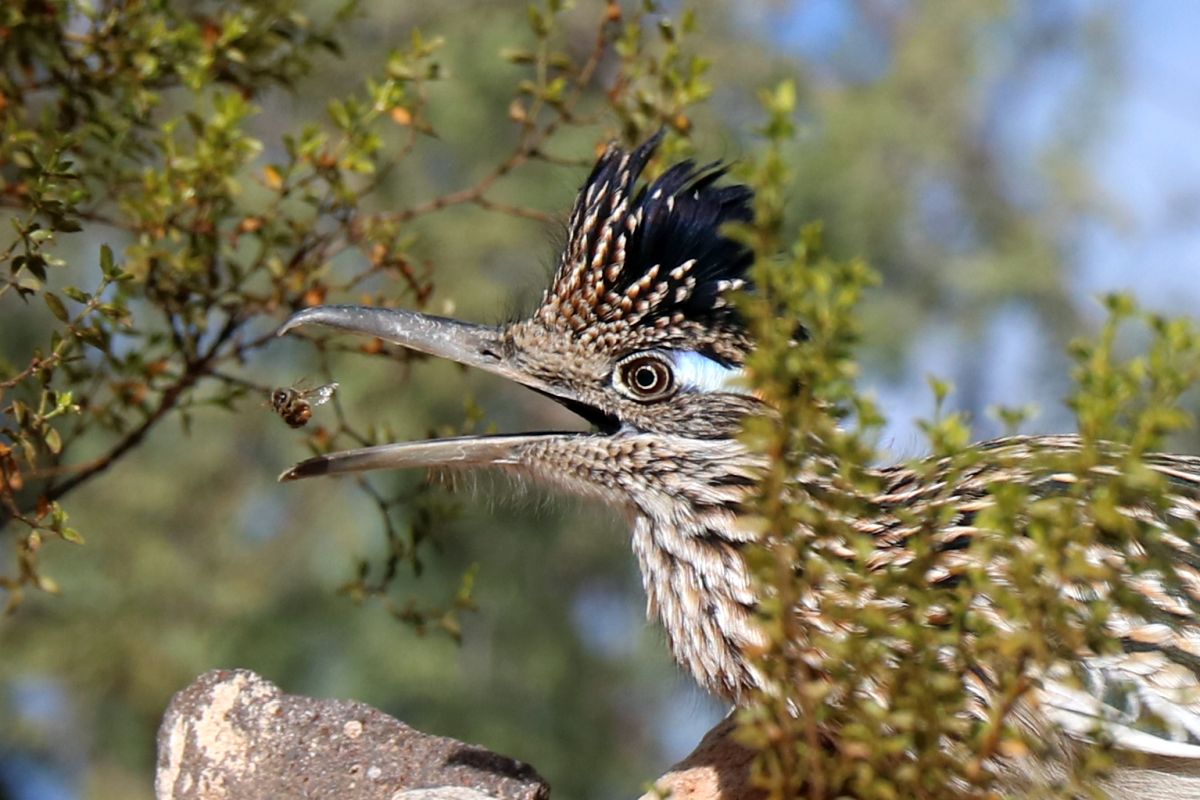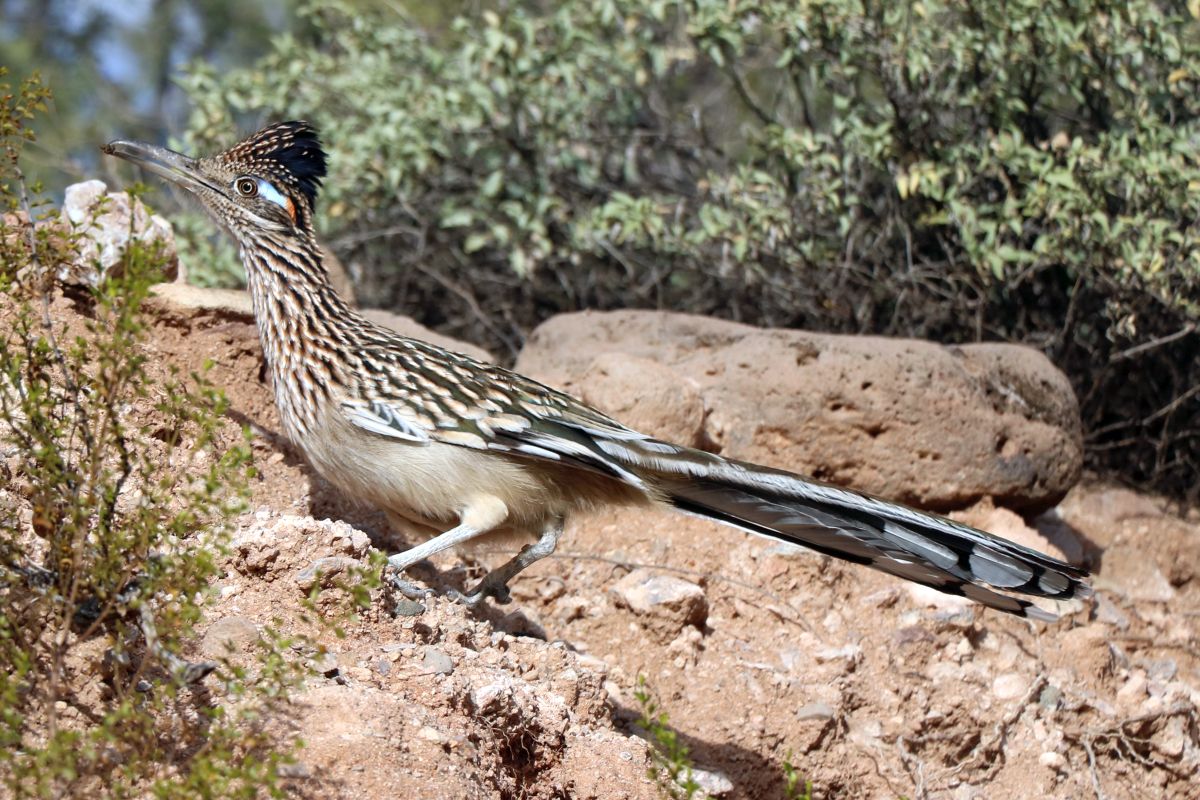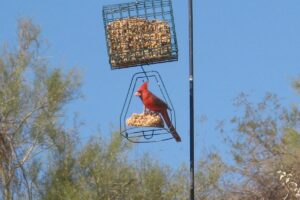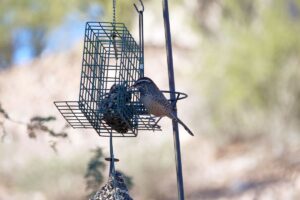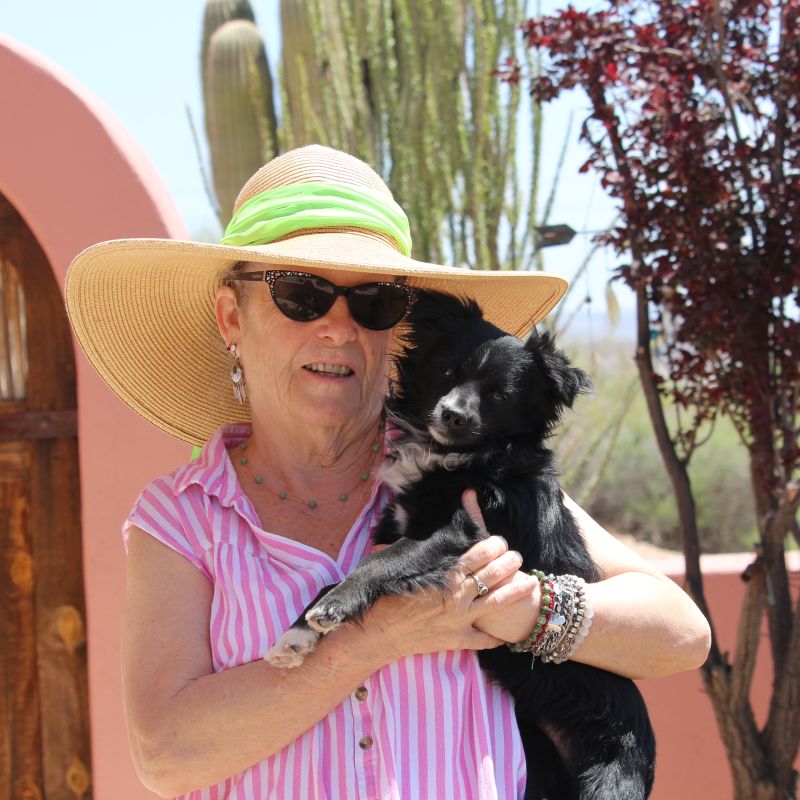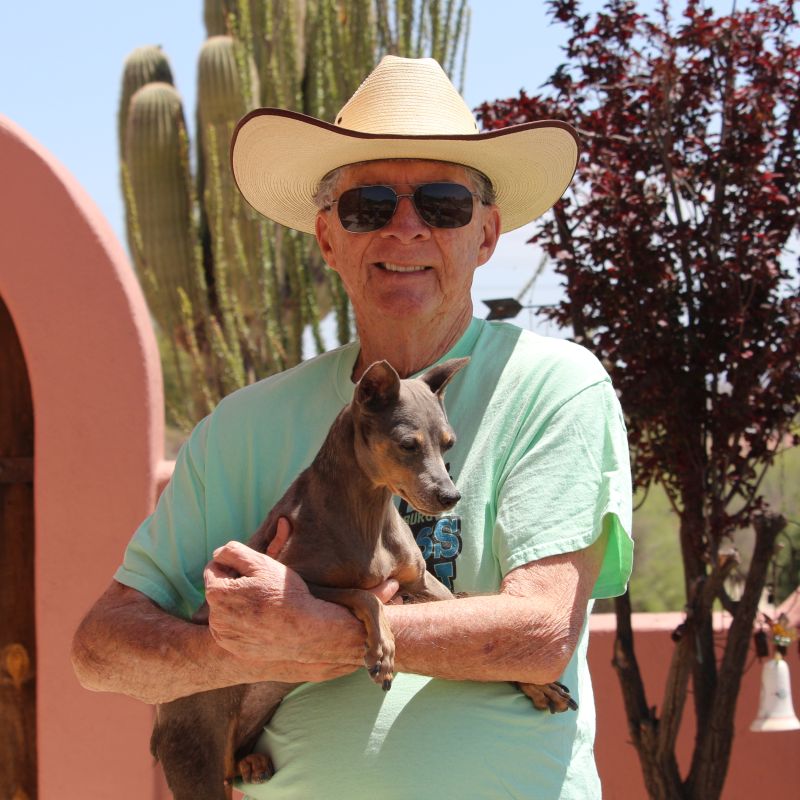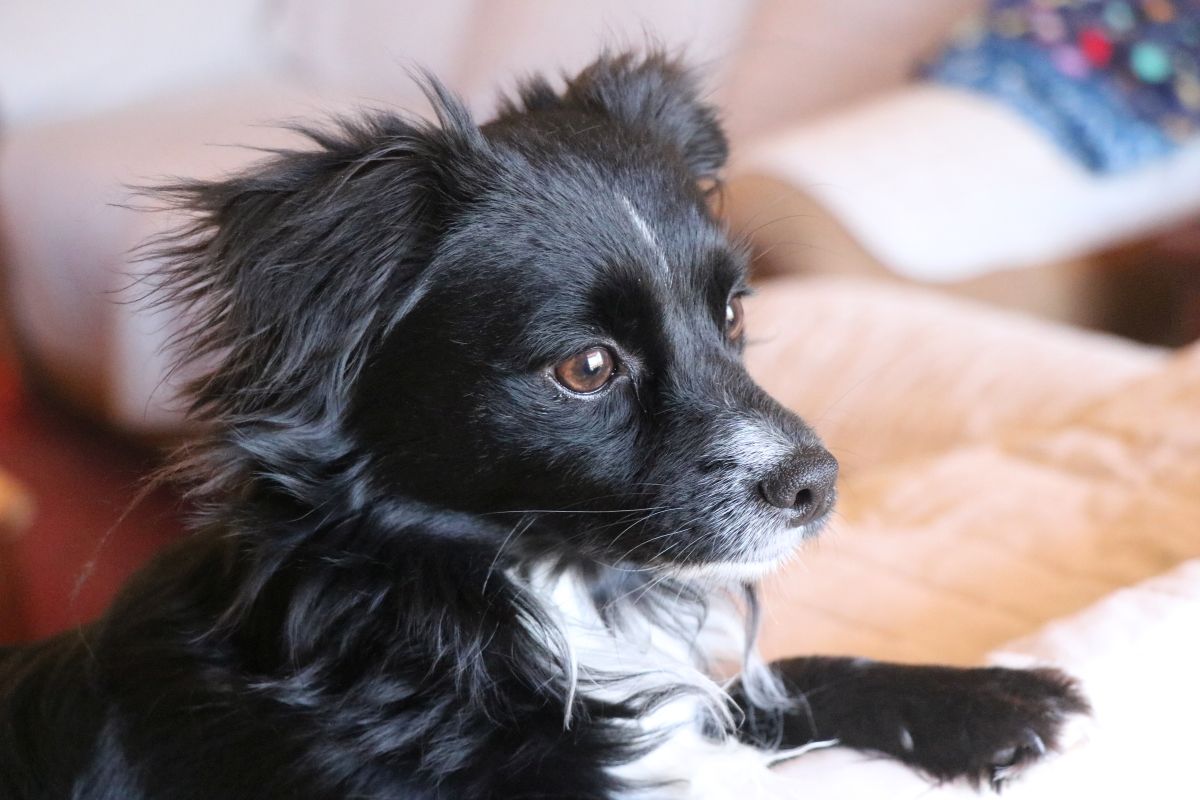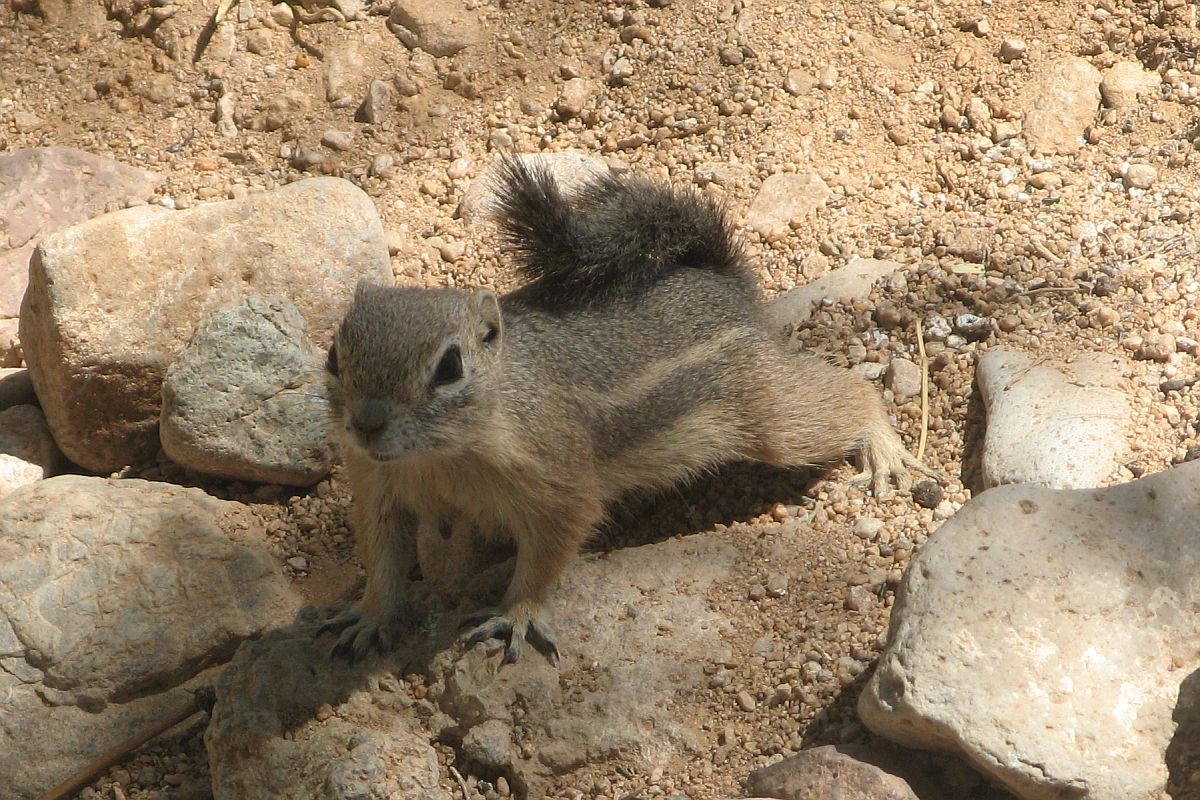We saw a roadrunner behind the RV drive this afternoon when coming home from our daily walk. I took several photos of it after going into the house and coming back out with my camera. At one point on its trek on the little hill back there, it caught a bee. I guess insects are part of their daily diet.
From Wikipedia — Greater Roadrunner (Geococcys Californianus) Food and foraging habits:
The roadrunner is an opportunistic omnivore. Its diet normally consists of insects (such as grasshoppers, crickets, caterpillars, and beetles), small reptiles (such as lizards and snakes, including rattlesnakes), rodents and other small mammals, spiders (including tarantulas), scorpions, centipedes, snails, small birds (and nestlings), eggs, and fruits and seeds like those from prickly pear cactuses and sumacs. The roadrunner forages on the ground and, when hunting, usually runs after prey from under cover. It may leap to catch insects, and commonly batters certain prey against the ground. Because of its quickness, the roadrunner is one of the few animals that preys upon rattlesnakes; it is also the only real predator of tarantula hawk wasps.
Image above: Catching a bee. Image below: Greater Roadrunner. Click on either image to enlarge.

